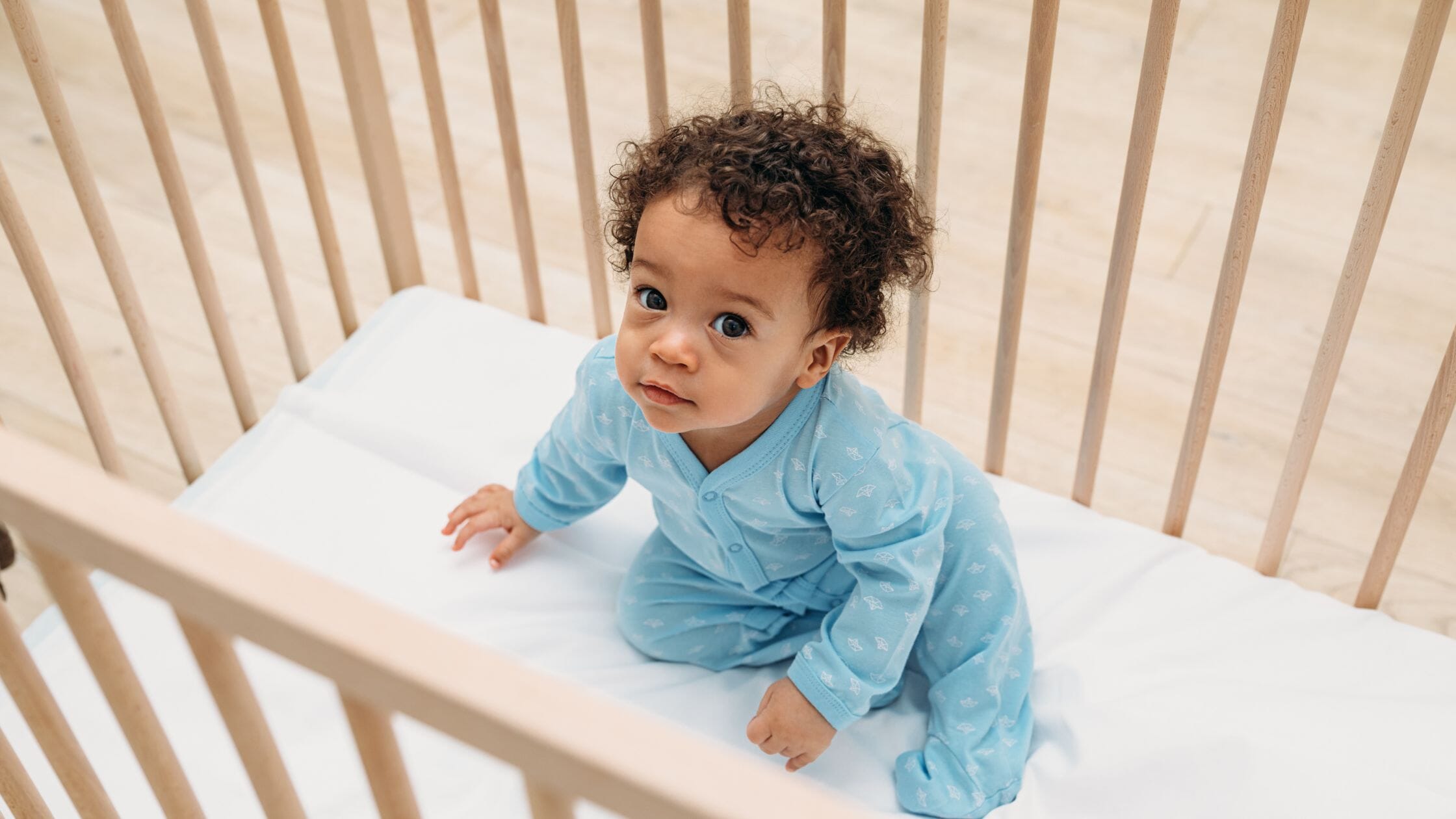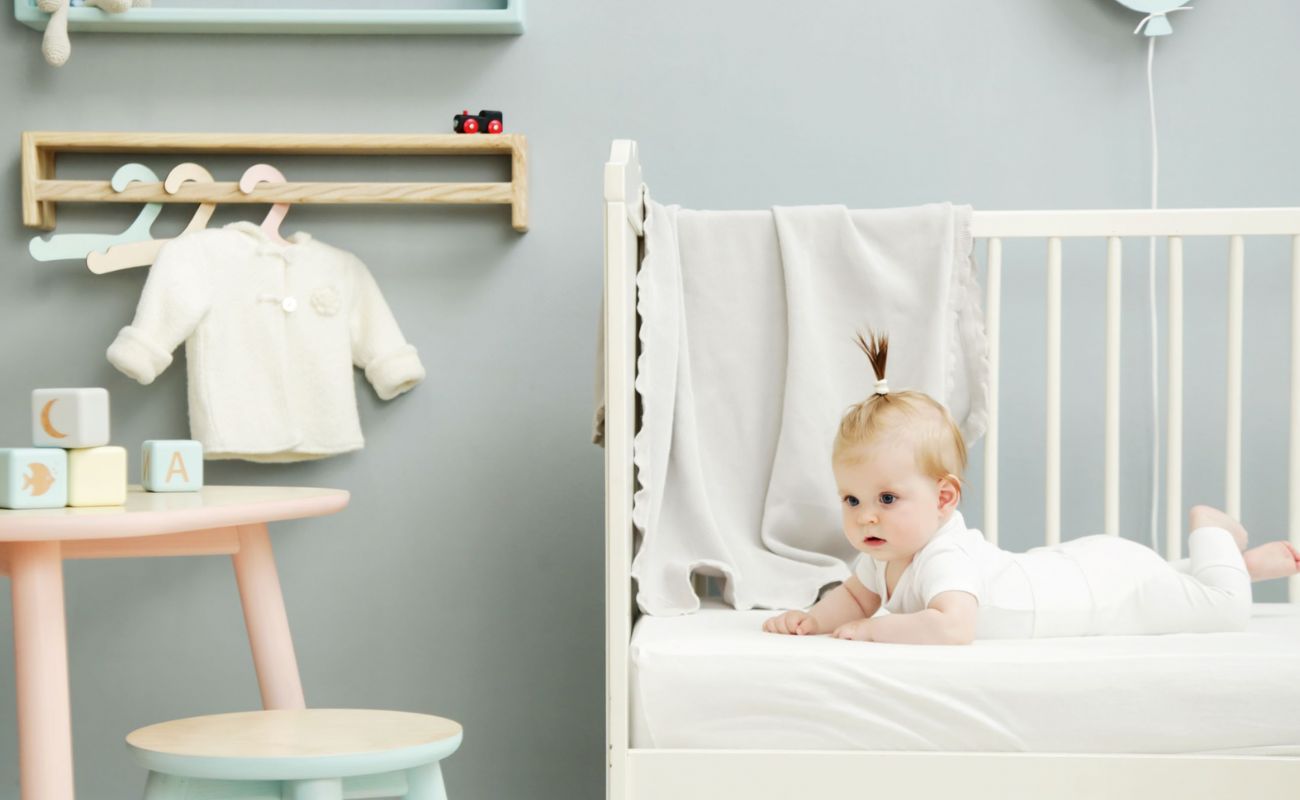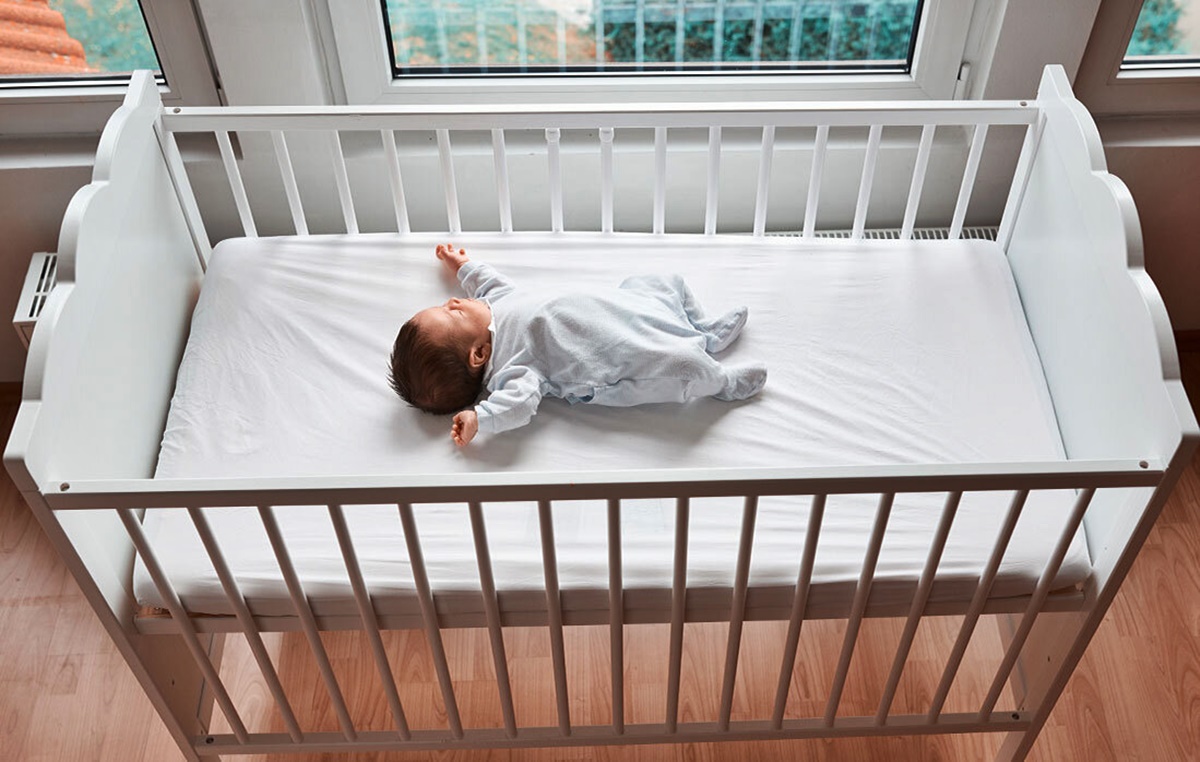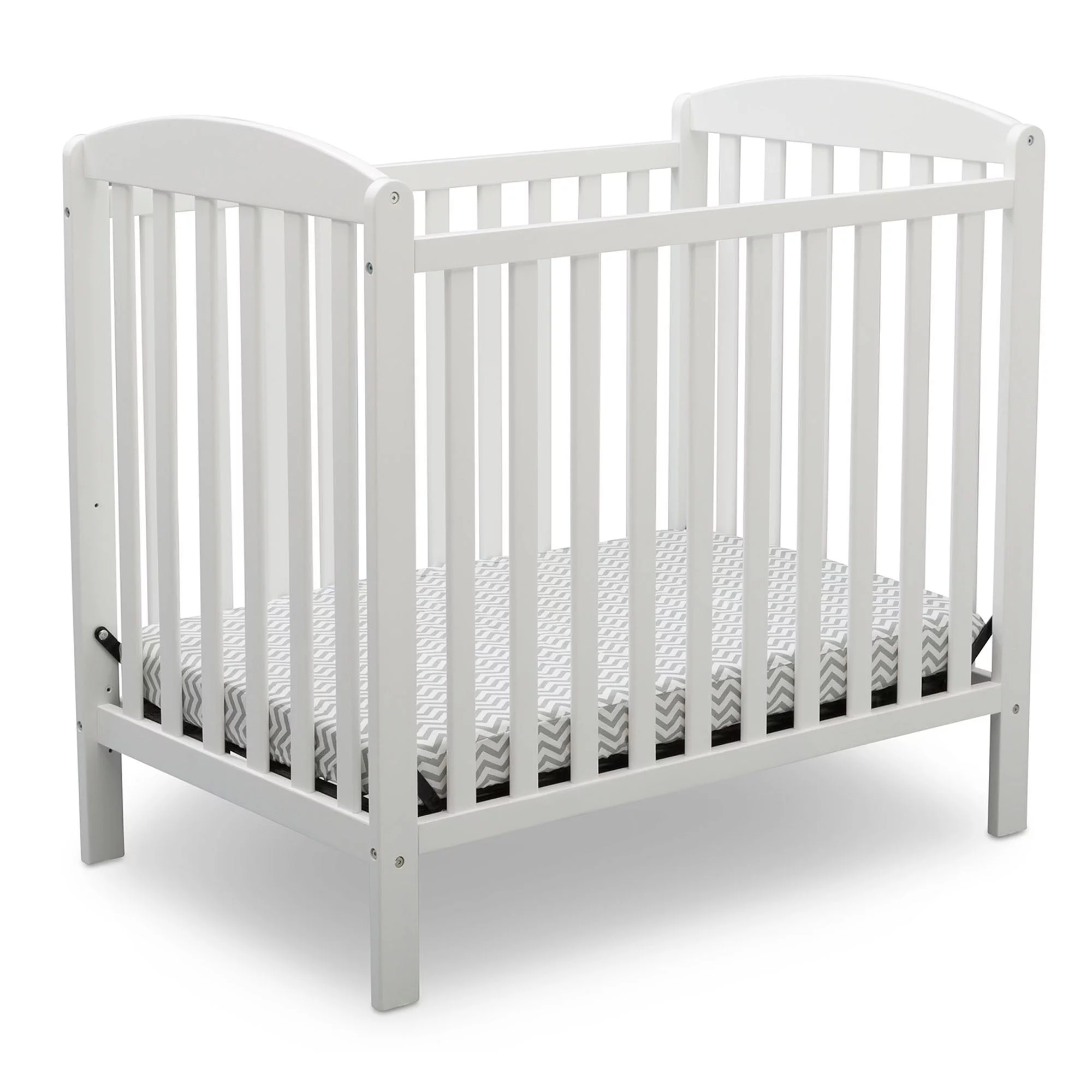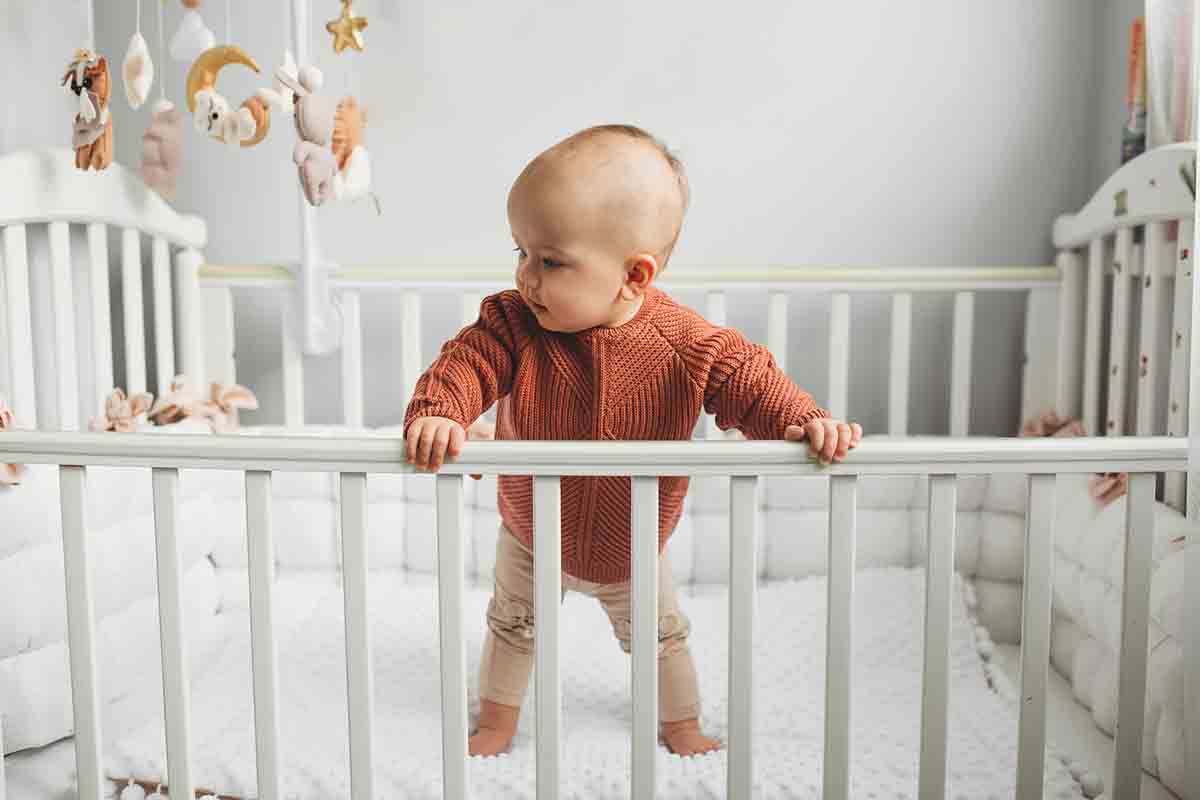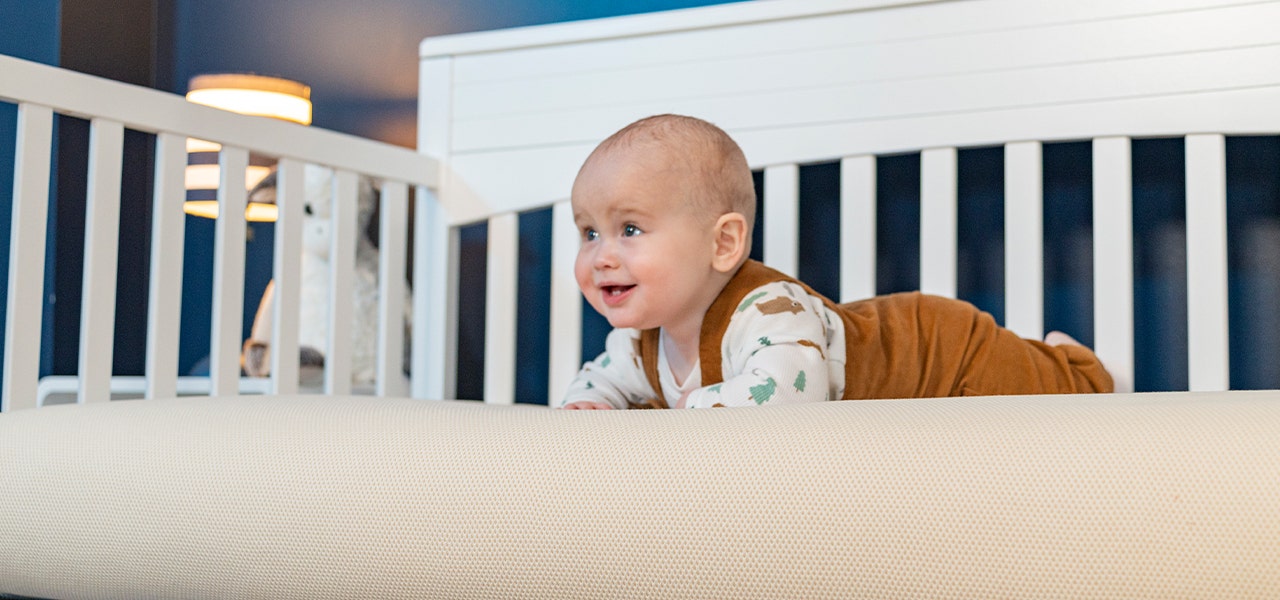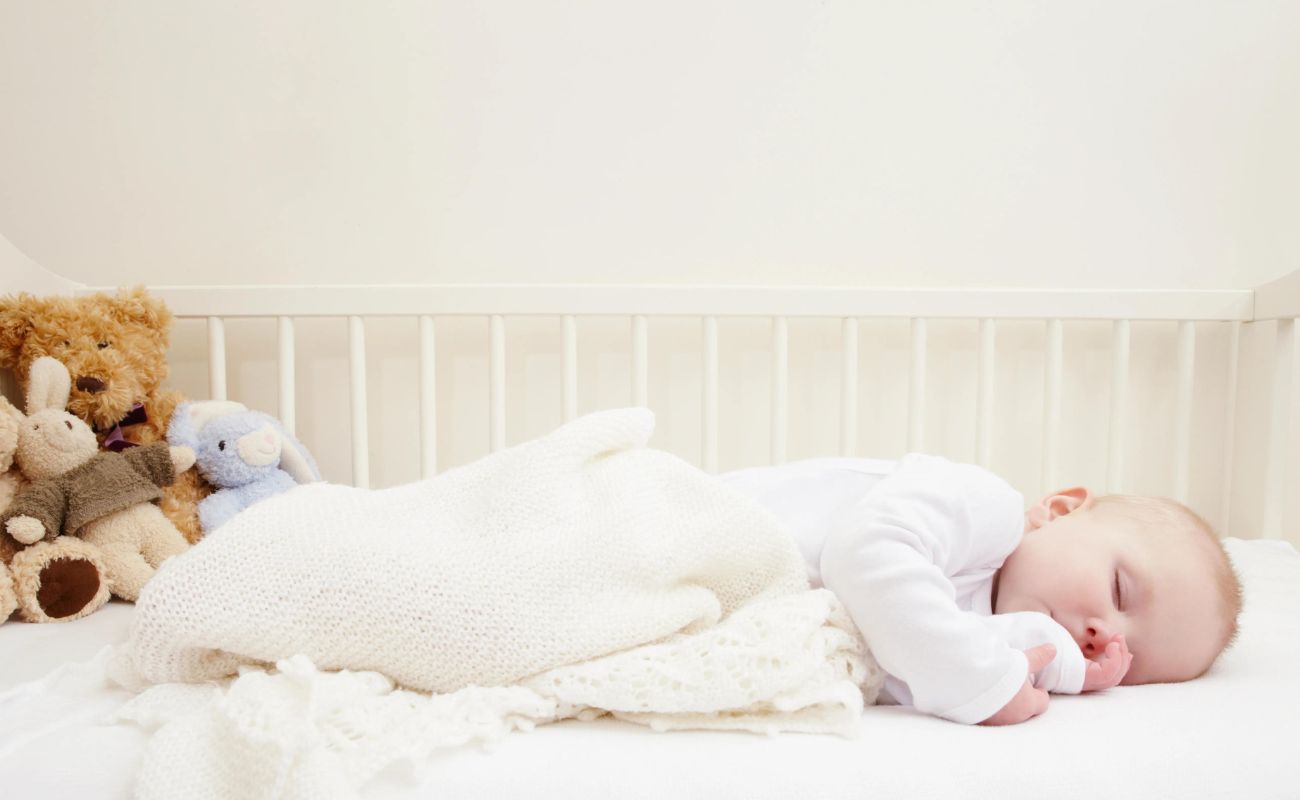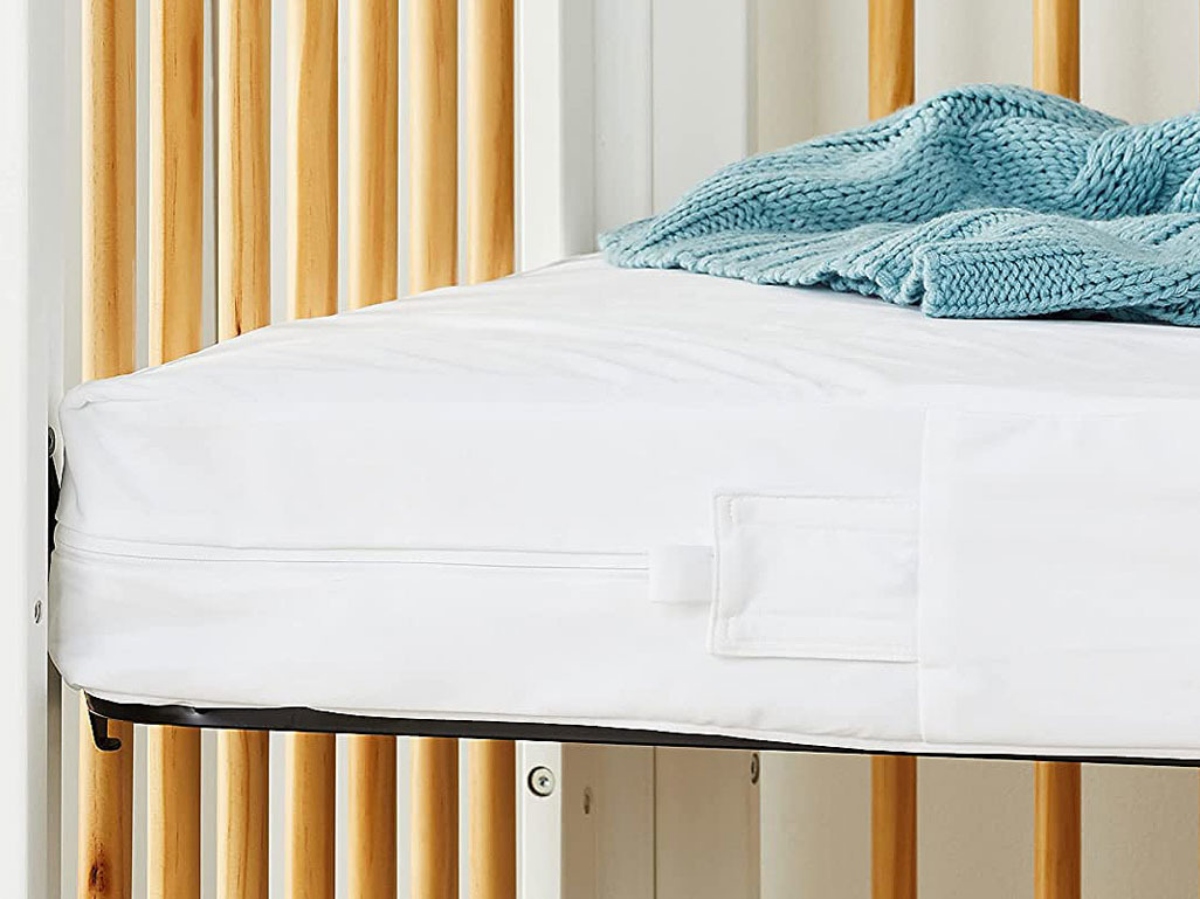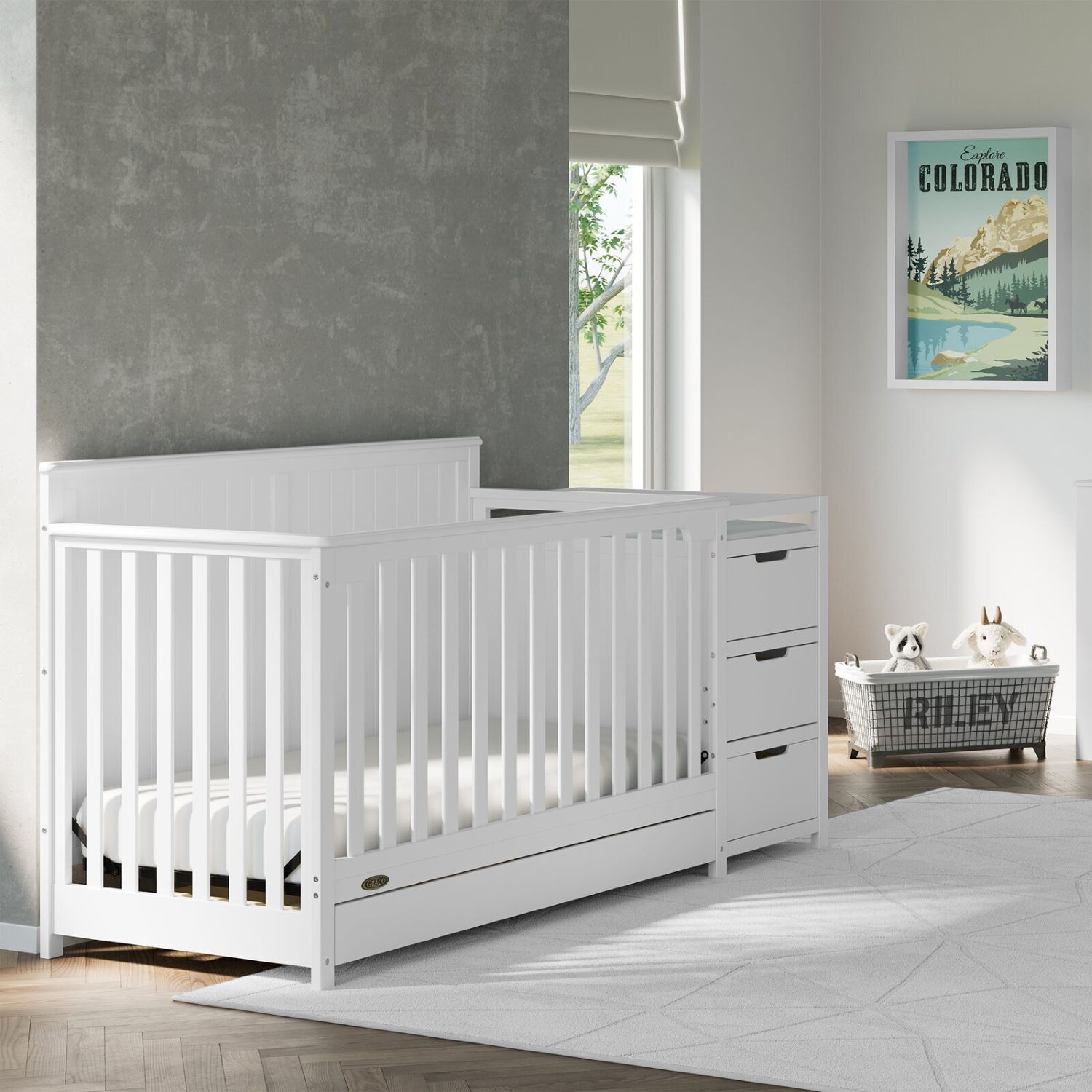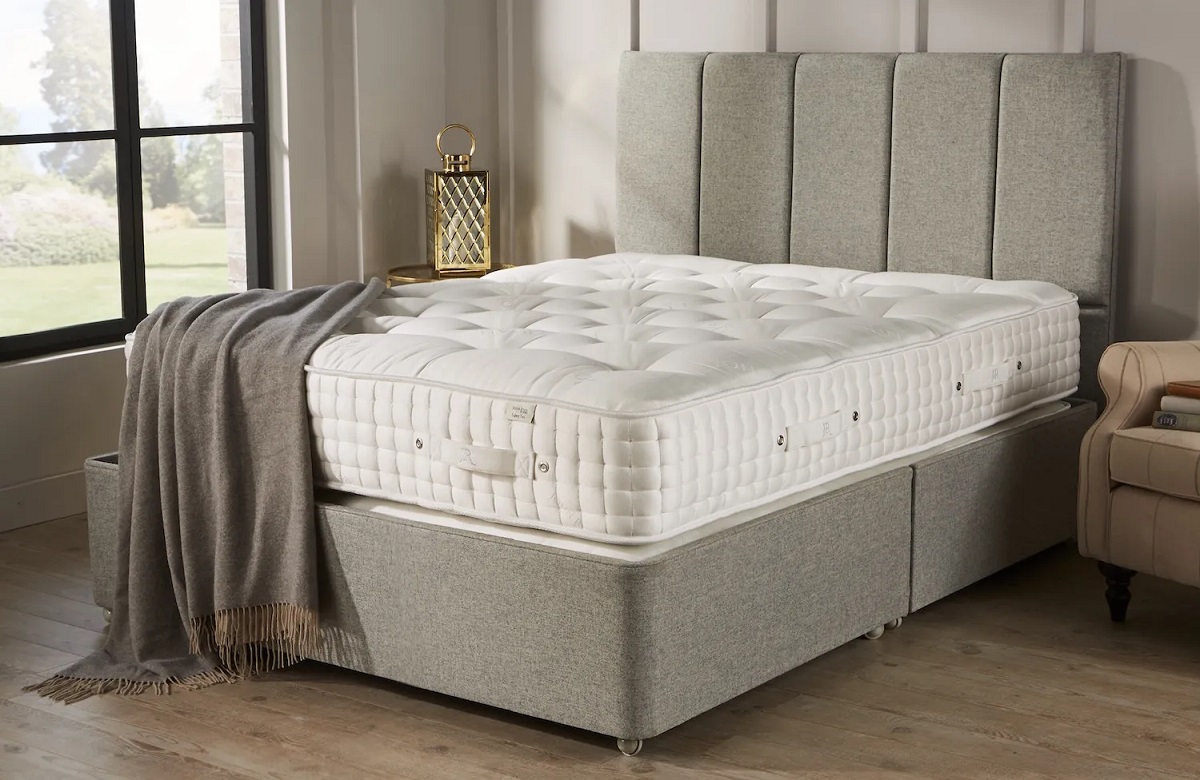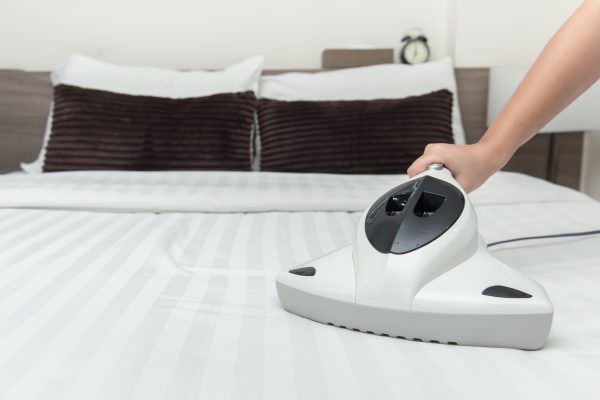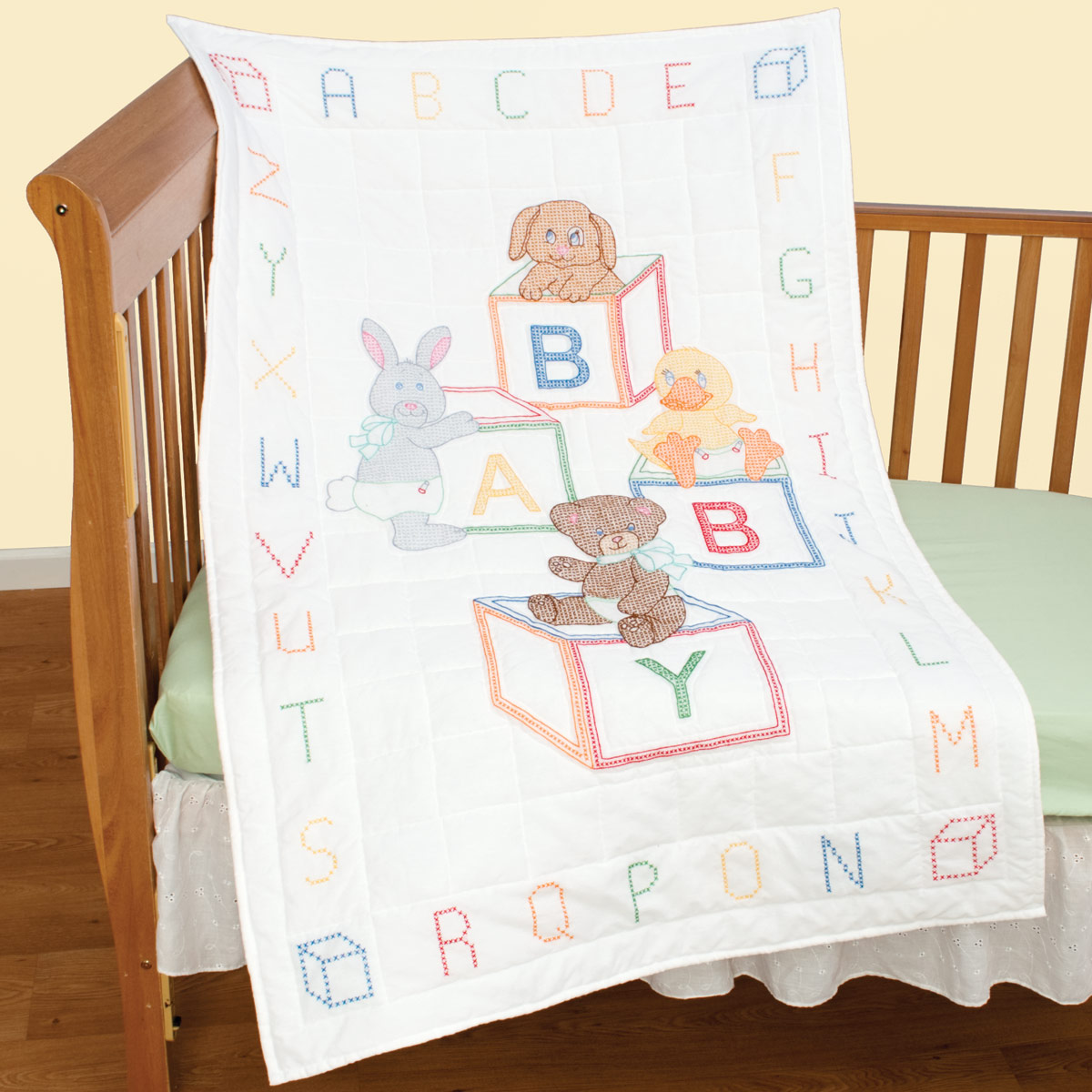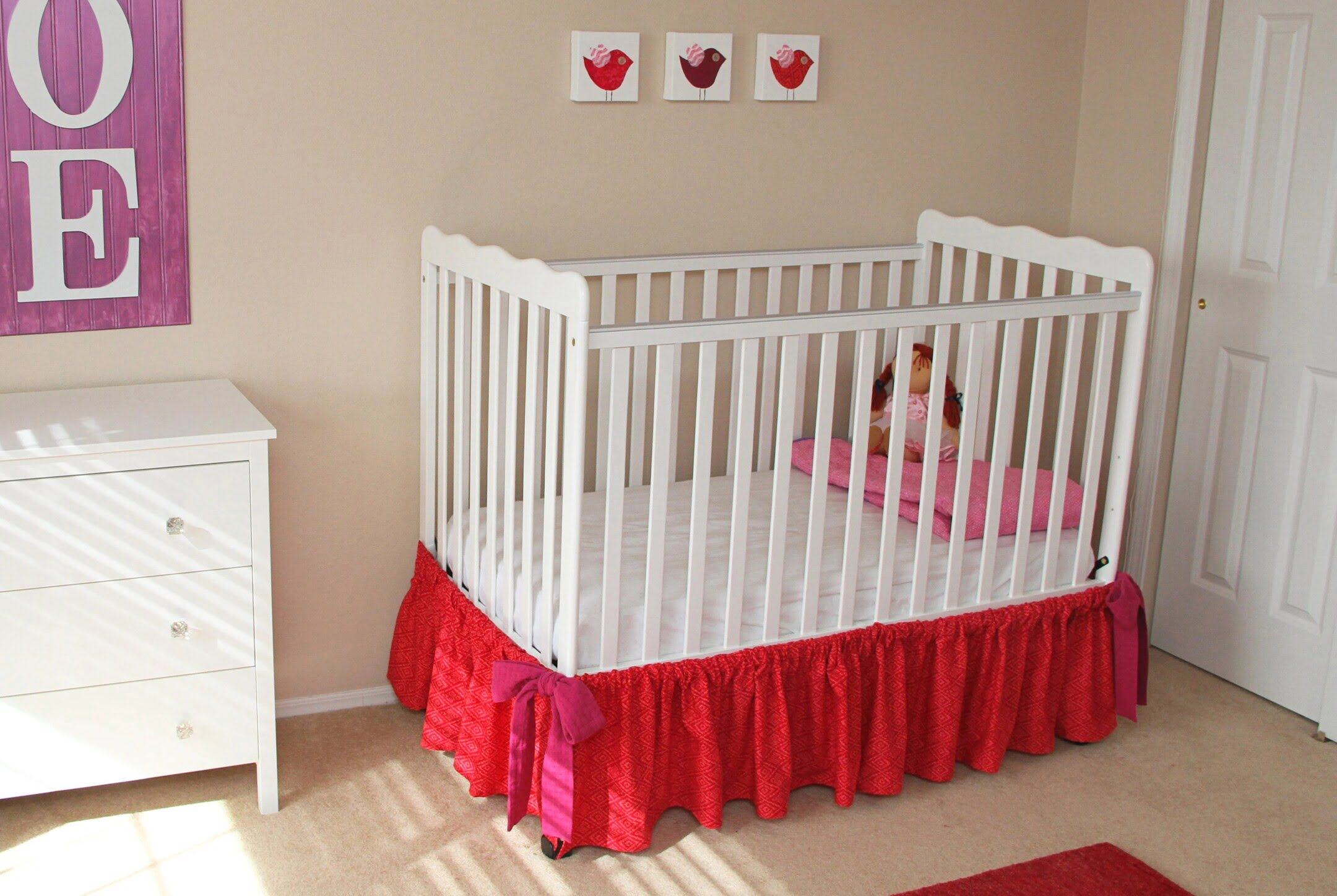Home>Furniture>Bedroom Furniture>How To Pick A Crib Mattress
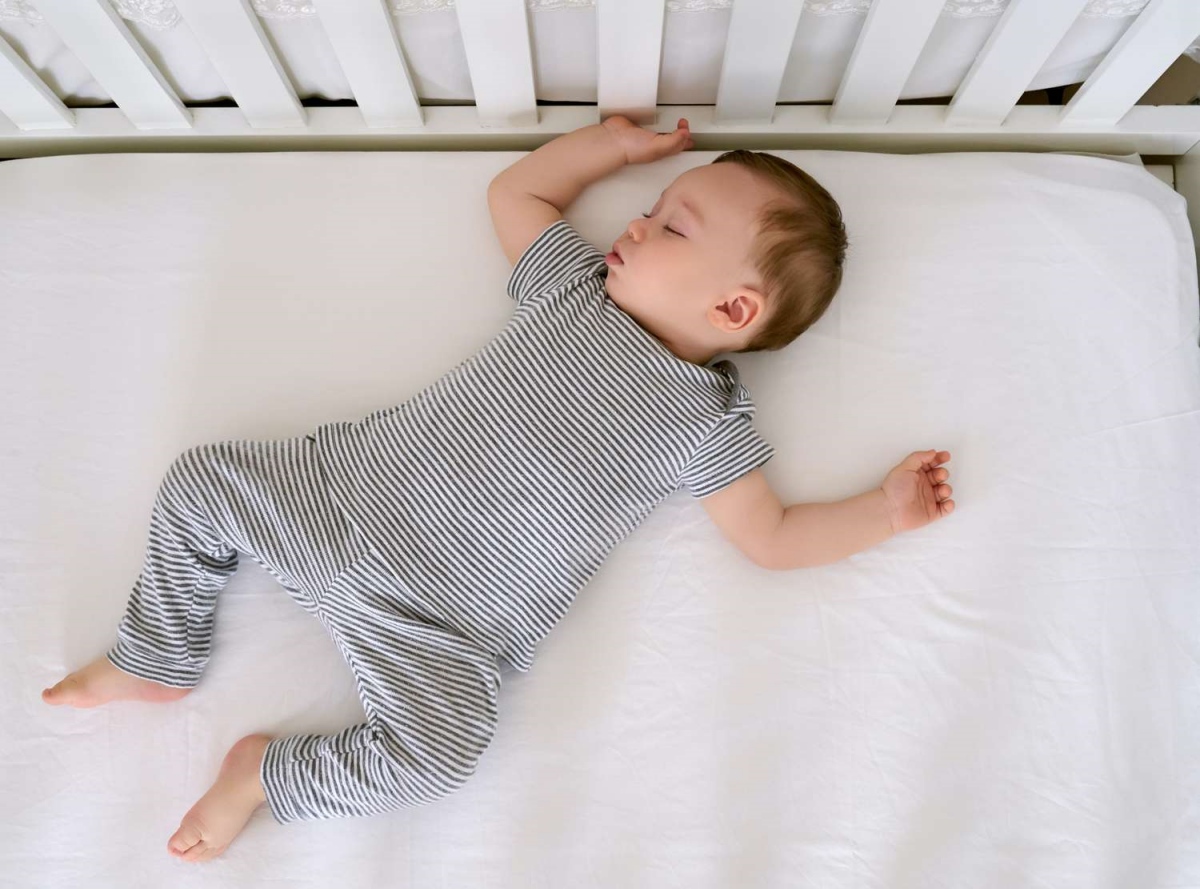

Bedroom Furniture
How To Pick A Crib Mattress
Modified: September 1, 2024
Looking for the perfect crib mattress to complete your bedroom furniture? Learn how to pick the best one with our helpful guide.
(Many of the links in this article redirect to a specific reviewed product. Your purchase of these products through affiliate links helps to generate commission for Storables.com, at no extra cost. Learn more)
Introduction
Welcome to the world of crib mattresses – a key component of your baby’s sleep quality and overall safety. Choosing the right crib mattress is essential for providing a comfortable and secure sleeping environment for your little one. With so many options available in the market, it can often be overwhelming to make the best decision.
In this article, we will guide you through the factors to consider, different types of crib mattresses, safety measures, and provide tips to help you select the perfect crib mattress for your baby.
Quality sleep is crucial for your baby’s growth and development. During the first year of life, infants spend a significant amount of time sleeping, sometimes up to 16 hours a day. Therefore, it’s important to invest in a crib mattress that provides adequate support, promotes proper spinal alignment, and reduces the risk of suffocation or Sudden Infant Death Syndrome (SIDS).
Keep in mind that a crib mattress should fit snugly in the crib without any gaps between the mattress and the sides of the crib. This ensures that your baby remains safe and secure while sleeping. Additionally, the mattress should be firm, as a soft mattress can increase the risk of suffocation or entrapment.
With a wide range of options available, from foam to innerspring to organic mattresses, it’s crucial to understand the different features and materials to make an informed decision. Let’s dive deeper into the factors you should consider when choosing a crib mattress.
Key Takeaways:
- Prioritize safety, firmness, and proper fit when choosing a crib mattress to ensure a comfortable and secure sleeping environment for your baby’s growth and development.
- Consider factors, types, and safety measures, while avoiding common mistakes, to make an informed decision and find the perfect crib mattress for your little one’s well-being.
Read more: How Wide Is A Crib Mattress
Factors to Consider Before Choosing a Crib Mattress
When it comes to selecting a crib mattress for your baby, there are a few important factors to keep in mind. These factors will ensure that you choose a mattress that provides both comfort and safety for your little one. Let’s explore each of these factors in detail:
- Safety Standards: The first and foremost consideration should be the safety standards of the crib mattress. Look for products that meet the safety regulations set by organizations such as the Consumer Product Safety Commission (CPSC) and the American Society for Testing and Materials (ASTM). These standards ensure that the mattress is free from harmful chemicals and meets the necessary flammability requirements.
- Size and Fit: It’s vital that the crib mattress fits snugly in the crib without leaving any gaps. Measure the inside dimensions of your crib and choose a mattress that matches those measurements. Avoid mattresses that are too small or too large as they can pose a risk of entrapment or suffocation.
- Firmness: A firm mattress is essential for your baby’s safety as it reduces the risk of suffocation and promotes proper spinal alignment. Press the center and edges of the mattress to ensure it springs back immediately. Avoid mattresses that are too soft or cushiony.
- Materials: Crib mattresses are typically made from foam or innerspring. Foam mattresses are lightweight and often less expensive, while innerspring mattresses provide more support and durability. Consider your preferences and budget when choosing between these two options.
- Waterproof and Breathable: Babies tend to have accidents, and a waterproof crib mattress cover can be a lifesaver. Look for a mattress with a waterproof cover that is also breathable, allowing air circulation to prevent the buildup of moisture and odors.
- Hypoallergenic: If your baby has allergies or sensitivities, opt for a crib mattress that is hypoallergenic and free from common allergens like latex and harsh chemicals. This will help ensure a healthy sleeping environment for your little one.
- Longevity: Consider the longevity of the crib mattress. Look for mattresses that have dual-sided designs, with one side suitable for infants and the other side for toddlers. This allows you to use the mattress as your baby grows.
By considering these factors, you can make a well-informed decision and choose a crib mattress that meets both your baby’s needs and your peace of mind. Next, let’s explore the different types of crib mattresses available in the market.
Types of Crib Mattresses
When it comes to crib mattresses, there are various types available to choose from. Each type offers different features, materials, and benefits. Understanding the differences between these types can help you make the best decision for your baby’s comfort and safety. Let’s take a closer look at the common types of crib mattresses:
- Foam Mattresses: Foam crib mattresses are lightweight and affordable. They are typically made from polyurethane foam and offer a firm and supportive surface for your baby. Foam mattresses are a popular choice due to their lightweight nature, making them easy to maneuver when changing sheets or moving the mattress.
- Innerspring Mattresses: Innerspring crib mattresses are constructed with steel coils surrounded by layers of padding and foam. This type of mattress provides excellent support and durability. The number and gauge of the coils determine the mattress’s firmness and support. Innerspring mattresses are generally more expensive than foam mattresses but tend to last longer.
- Organic Mattresses: Organic crib mattresses are made from natural and organic materials, such as organic cotton, wool, or natural latex. They are free from synthetic substances, harmful chemicals, and flame retardants. Organic mattresses are an excellent choice for parents who prioritize eco-friendly and non-toxic products. They may be more expensive than other types of mattresses, but they offer a safe and chemical-free sleeping environment for your baby.
- Dual-Sided Mattresses: Some crib mattresses are designed with two sides – one side for infants and a softer side for toddlers. The infant side is firmer to provide optimal support, while the toddler side offers a slightly softer surface for added comfort as your baby grows. Dual-sided mattresses are a convenient choice as they can be used from infancy through the toddler years.
- Combination Mattresses: Combination crib mattresses incorporate both foam and innerspring elements. They often feature a foam core with additional innerspring support. Combination mattresses aim to provide the benefits of both foam and innerspring mattresses, offering a comfortable and supportive surface for your baby.
Now that you have a better understanding of the different types of crib mattresses available, it’s important to prioritize safety measures while choosing a crib mattress for your baby. Let’s explore some essential safety guidelines in the next section.
Safety Measures to Ensure while Choosing a Crib Mattress
When it comes to your baby’s sleep environment, safety should always be a top priority. Here are some important safety measures to consider while choosing a crib mattress:
- Firmness: Opt for a firm crib mattress that provides proper support for your baby’s developing body. A soft mattress can increase the risk of suffocation or SIDS.
- Snug Fit: Ensure that the crib mattress fits snugly in the crib without any gaps between the mattress and the sides of the crib. This prevents the risk of entrapment and ensures your baby’s safety.
- No Pillowtops: Avoid crib mattresses with pillowtops, as they can create a suffocation hazard. Stick to a firm and flat sleeping surface for your baby.
- Waterproof Cover: Look for a crib mattress with a waterproof cover or consider purchasing a separate waterproof mattress cover. This will protect the mattress from spills, accidents, and moisture buildup, keeping it clean and hygienic.
- No Gaps or Sags: Make sure the mattress has no gaps or sagging areas that could potentially trap your baby’s limbs or pose a suffocation risk. Check the mattress regularly for wear and tear.
- Cleanable Materials: Choose a crib mattress with materials that are easy to clean. Look for removable and washable covers, as accidents and spills are common in the early years.
- Certifications: Look for crib mattresses that have been independently certified for safety, such as those certified by the Greenguard Gold Standard or CertiPUR-US. These certifications ensure that the mattress meets rigorous safety and emission standards.
- No Recalled Mattresses: Before purchasing a crib mattress, check for any recalls. Stay informed about any safety concerns and be sure to choose a mattress that has not been recalled by the manufacturer or regulatory authorities.
By following these safety measures, you can provide a secure and comfortable sleeping environment for your baby. Now, let’s move on to some practical tips on how to select the right crib mattress for your little one.
When picking a crib mattress, look for one that is firm and fits snugly in the crib with no gaps. It should also be waterproof and easy to clean for any accidents.
Tips to Select the Right Crib Mattress for Your Baby
Choosing the right crib mattress for your baby is an important decision that can contribute to their overall comfort and safety. Here are some tips to help you select the perfect crib mattress:
- Do Your Research: Take the time to research different types of crib mattresses, their features, and customer reviews. This will help you gain a better understanding of the options available and narrow down your choices.
- Consider Your Budget: Determine your budget range before starting your search. Remember, a higher price doesn’t always indicate better quality or safety. Look for a mattress that meets your requirements within your budget.
- Seek Certifications: Look for crib mattresses that have been certified by reputable organizations such as the Greenguard Gold Standard or CertiPUR-US. These certifications ensure that the mattress meets strict safety and emission standards.
- Check for Proper Firmness: Press down on the center and edges of the mattress to ensure it springs back immediately. A firm mattress reduces the risk of suffocation and promotes proper spinal alignment.
- Measure Your Crib: Measure the inside dimensions of your crib before purchasing a mattress. The mattress should fit snugly in the crib without any gaps or spaces between the mattress and the sides of the crib.
- Choose a Waterproof Cover: Consider a crib mattress with a waterproof cover or purchase a separate waterproof mattress cover. This will protect the mattress from spills, accidents, and moisture buildup, keeping it clean and hygienic.
- Look for Dual-Sided Mattresses: Dual-sided mattresses with one side for infants and a softer side for toddlers can be a practical investment. They provide appropriate support for different stages of your baby’s growth.
- Consider Organic or Hypoallergenic Options: If your baby has allergies or sensitivities, consider opting for an organic or hypoallergenic crib mattress. These mattresses are made with natural and non-toxic materials, reducing the risk of allergic reactions.
- Read Customer Reviews: Read reviews from other parents to understand their experiences with different crib mattresses. Look for feedback on comfort, durability, and safety features.
- Trust Your Instincts: Ultimately, trust your instincts and choose a crib mattress that feels right for your baby. Pay attention to your baby’s comfort and safety needs, and select a mattress that aligns with those requirements.
By following these tips, you’ll be able to make an informed decision and find the best crib mattress to provide a comfortable and safe sleeping surface for your baby.
Next, let’s discuss some common mistakes to avoid when choosing a crib mattress.
Read more: How To Raise A Crib Mattress
Common Mistakes to Avoid when Choosing a Crib Mattress
When selecting a crib mattress for your baby, it’s important to avoid certain common mistakes that could compromise their safety and comfort. Here are some mistakes to watch out for:
- Choosing a Mattress Based Solely on Price: While budget is a factor, solely basing your decision on price can lead to compromising on quality and safety. Consider the features, materials, and certifications of the mattress rather than just the price tag.
- Not Considering Firmness: It’s crucial to choose a firm crib mattress for your baby. A soft mattress increases the risk of suffocation and is not recommended. Avoid mattresses that are too plush or cushiony.
- Not Checking Safety Certifications: Don’t skip checking for safety certifications such as those from the Greenguard Gold Standard or CertiPUR-US. These certifications ensure that the mattress meets safety and emission standards.
- Ignoring Mattress Size: Ensure that the mattress fits snugly in the crib without any gaps around the edges. A mattress that is too small or too big can pose safety risks, such as possible entrapment or suffocation.
- Overlooking Waterproofing: Accidents are common during the early years. Choosing a crib mattress without a waterproof cover or not using a separate waterproof mattress cover can lead to stains, odors, and moisture buildup.
- Not Considering Allergies or Sensitivities: If your baby has allergies or sensitivities, opt for an organic or hypoallergenic crib mattress. This helps reduce the risk of allergic reactions and ensures a safer sleeping environment.
- Not Reading Customer Reviews: Customer reviews can provide valuable insights into the quality, durability, and comfort of a crib mattress. Don’t overlook the experiences and feedback shared by other parents.
- Forgetting Longevity: Consider how long the crib mattress can be used. Look for mattresses that have dual-sided designs – one side suitable for infants and a softer side for toddlers. This allows you to use the mattress as your baby grows.
- Ignoring Recalls: Before purchasing a crib mattress, check for any recalls associated with the product. Stay informed about any safety concerns and choose a mattress that hasn’t been recalled by the manufacturer or regulatory authorities.
- Not Trusting Your Instincts: While it’s important to consider recommendations and guidelines, it’s also crucial to trust your instincts. Pay attention to your baby’s needs and select a mattress that feels right for them.
By avoiding these common mistakes, you’ll be able to choose a crib mattress that prioritizes your baby’s safety, comfort, and well-being.
Now that we’ve covered the common mistakes to avoid, let’s conclude with a final summary.
Conclusion
Choosing the right crib mattress for your baby is a crucial decision that can significantly impact their comfort, safety, and quality of sleep. By considering factors such as safety standards, size and fit, firmness, materials, and waterproofing, you can make an informed decision that provides your little one with a comfortable and secure sleeping environment.
When exploring the types of crib mattresses available, including foam, innerspring, organic, dual-sided, and combination mattresses, it’s important to assess their features, benefits, and suitability for your baby’s needs. Each type has its own advantages and considerations, and understanding the differences can help you make the best choice.
To ensure your baby’s safety, always prioritize safety measures like firmness, a snug fit in the crib, no pillowtops, a waterproof cover, and cleanable materials. Additionally, look for certifications that validate the mattress’s compliance with safety standards, and stay informed about any recalls to avoid potentially unsafe products.
When selecting a crib mattress, tips such as researching, considering your budget, seeking certifications, checking for proper firmness, measuring your crib, and reading customer reviews can guide you towards the right choice. Trusting your instincts and prioritizing your baby’s comfort and safety are also vital during the decision-making process.
Avoiding common mistakes, such as solely focusing on price, overlooking safety certifications, ignoring mattress size, neglecting waterproofing, and not considering allergies or sensitivities, is crucial to ensure a wise and safe purchase decision.
In conclusion, by carefully considering the factors, types, safety measures, and tips discussed in this article, you’ll be equipped with the knowledge to choose the perfect crib mattress that provides your baby with a comfortable and secure sleeping space. Remember, a well-chosen crib mattress contributes to your baby’s healthy sleep routine and promotes their overall growth and development.
Happy crib mattress shopping!
Frequently Asked Questions about How To Pick A Crib Mattress
Was this page helpful?
At Storables.com, we guarantee accurate and reliable information. Our content, validated by Expert Board Contributors, is crafted following stringent Editorial Policies. We're committed to providing you with well-researched, expert-backed insights for all your informational needs.
